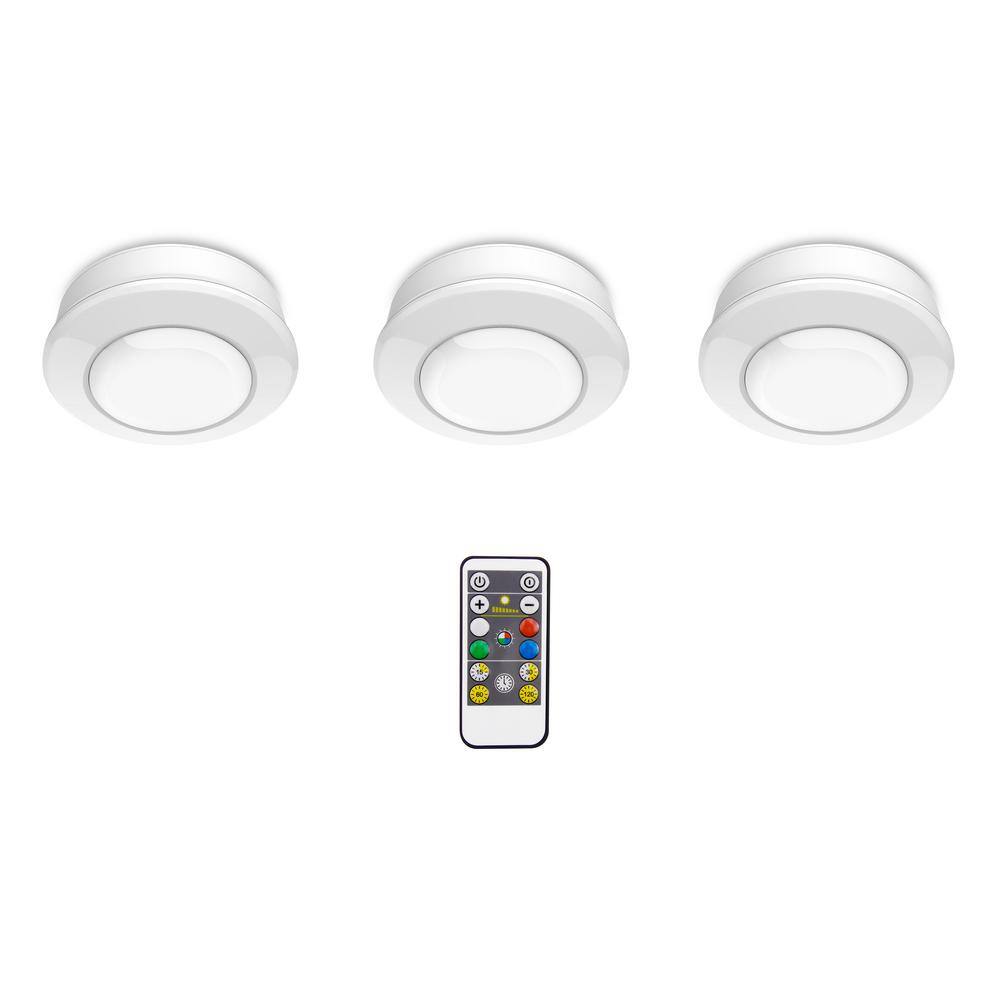Defiant Battery Operated 3.11 in. Round White Color Changing LED Puck Light with Remote Control (3-Pack)
Battery operated and ideal as an undercabinet light. Includes AAA batteries, adhesive, hardware, remote. Remote for on/off, color changing, dimming, and timer.
These powerful color-changing LED puck lights are easy to install and convenient to use with included remote control. Place them anywhere in your home where additional light is needed and a hardwired installation is not an option. Apply to nearly any surface using the double-sided adhesive tape included, or mount more permanently using the mounting screws provided. Each puck light requires 3 AAA batteries and can be controlled by pressing the light on/off, or by using the included remote control. Remote control includes on/off, dimmer, color changer, and timer. The LED bulbs shine brightly and are designed to last for years without burning out. These puck lights are ideal for use under cabinets, in boats or autos, in outdoor sheds, or any place bright light is needed without the hassle of wiring. Sold in packages of 3.
- Each LED puck requires 3 AAA batteries, included
- Easy to install using included adhesive tape or mounting screws
- Low profile design fits into tight places
- Each puck provides up to 60 Lumens of light, dimmable with remote
- Lights can be adjusted to 4 different colors; white, red, blue, or green with included remote control
- Remote control gives the option to set timer to 15, 30, 60 or 120-minutes
- Press on-off use or use included remote to turn on-off
- Ideal for use as undercabinet lighting
- Battery operated; hardwired connection not required
- Remote uses RF technology and does not need to be aimed at the puck light
- Each new set of batteries gives about 22-hours of run time
Additional information
| Dimensions | H 1.1 in, W 3.11 in, L 3.11 in |
|---|---|
| Certifications and Listings | FCC Listed |
| Manufacturer Warranty | 2 Year Limited Warranty |






by David
These trio set of pod lights work in unisom, with it remote. They were placed in the bedroom closet. Nicely.
by John
These lights were easy to install. My only downfall is that they are just not bright enough for me. I have them under the cabinets over my workspace in the kitchen. I ended up putting two under one cabinet but will need to get another set. It was brighter but still not bright enough for me for food prep. I just got them today so I can’t comment on the battery life yet.
by Chris
Got these to teach my kids about how light mixes to make colors. Really great tool for that, the red green and blue lights are very similar in strength and can mixed together to show how we make Yellow, Cyan, Magenta, and even white light.